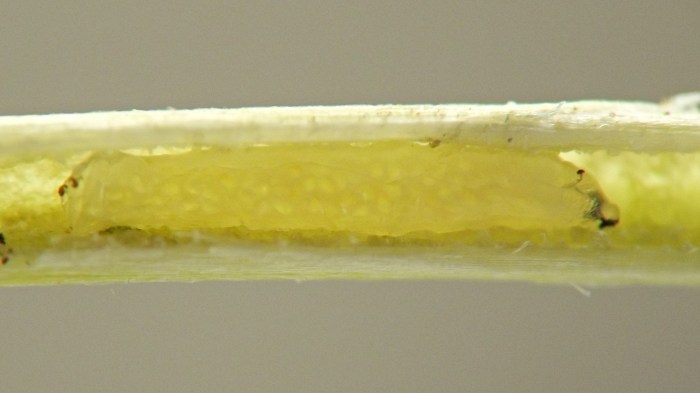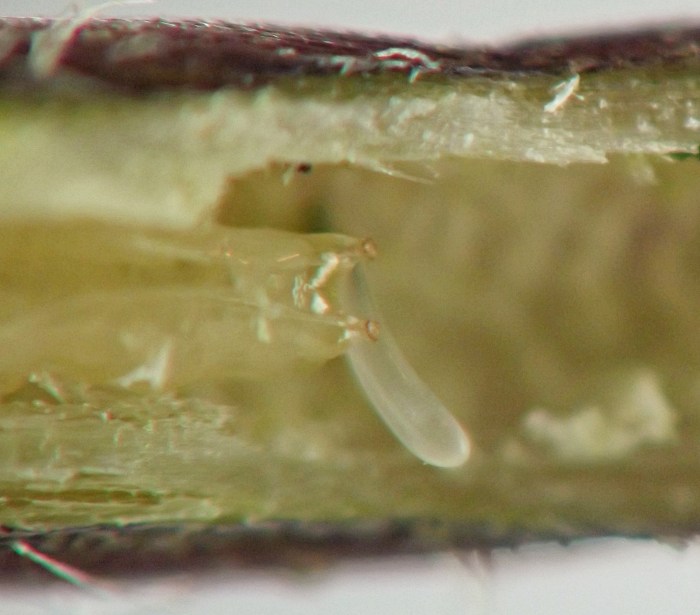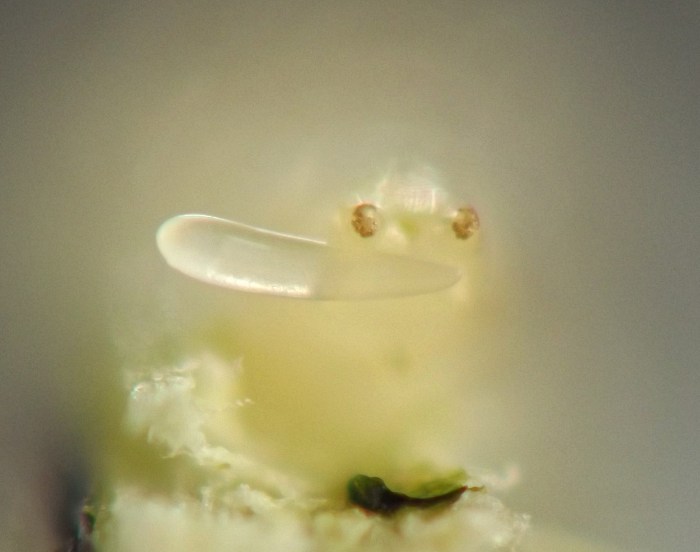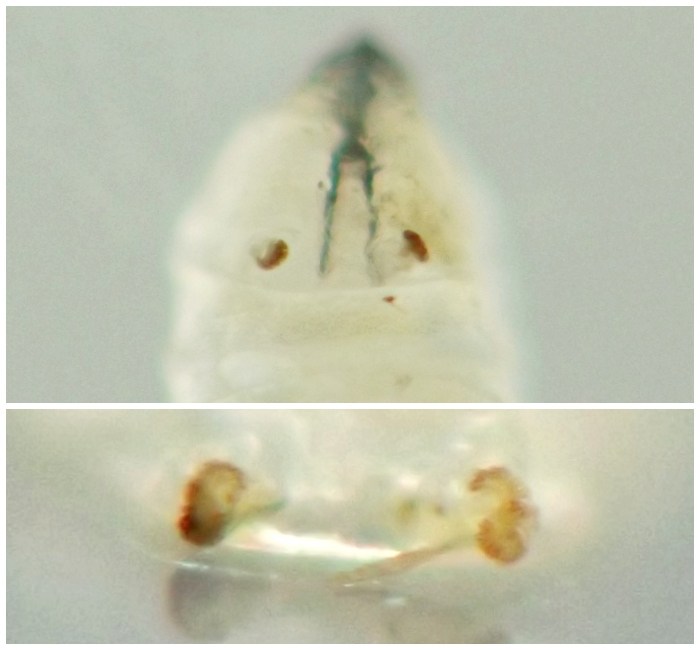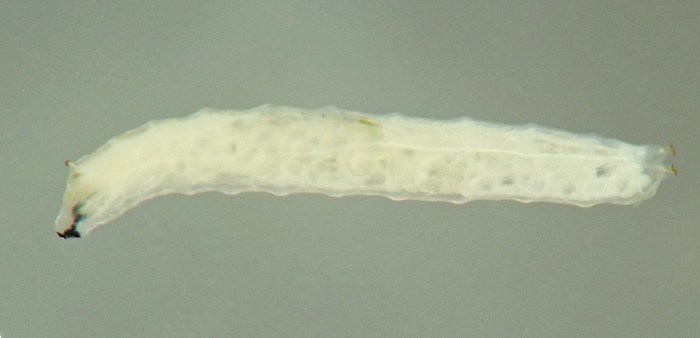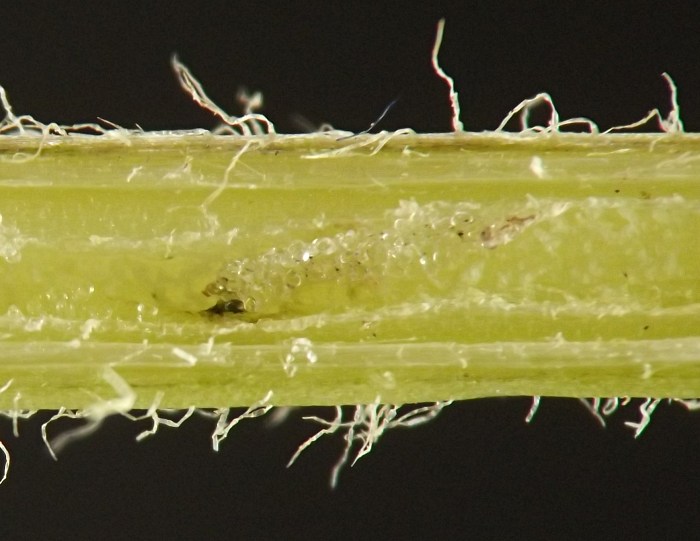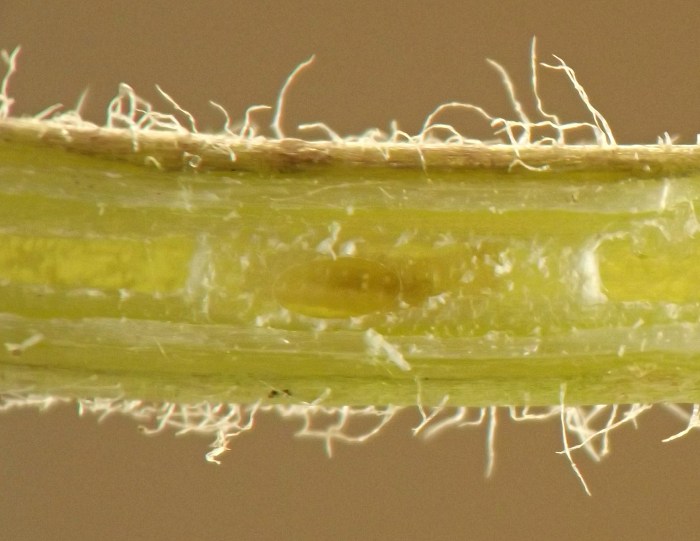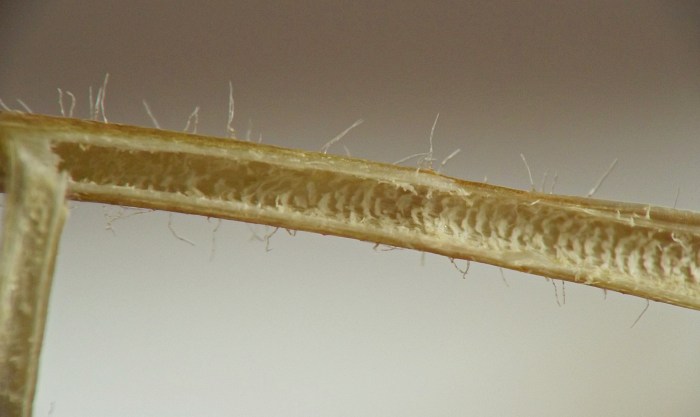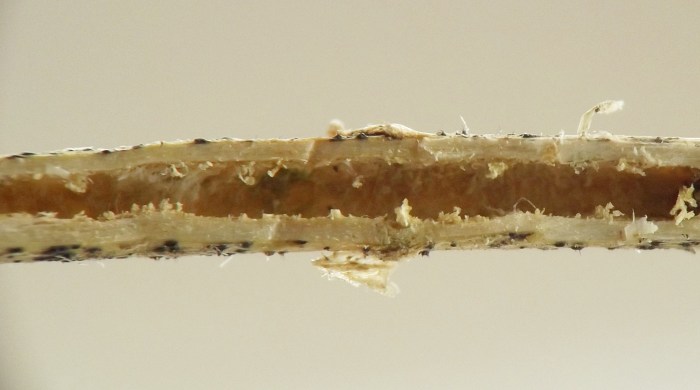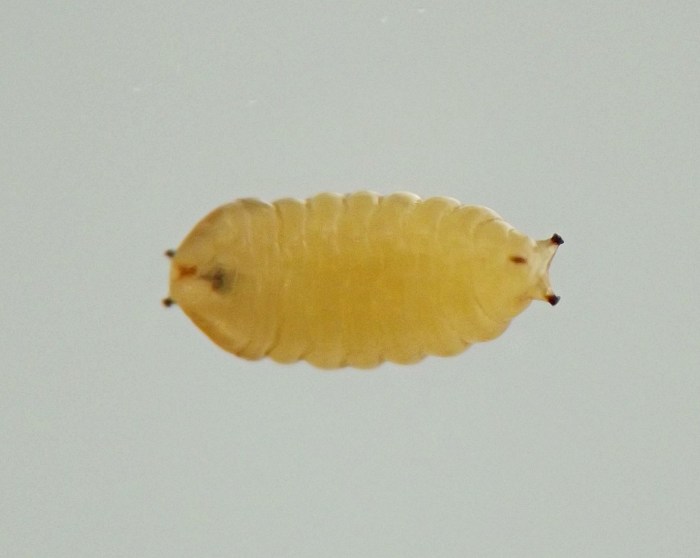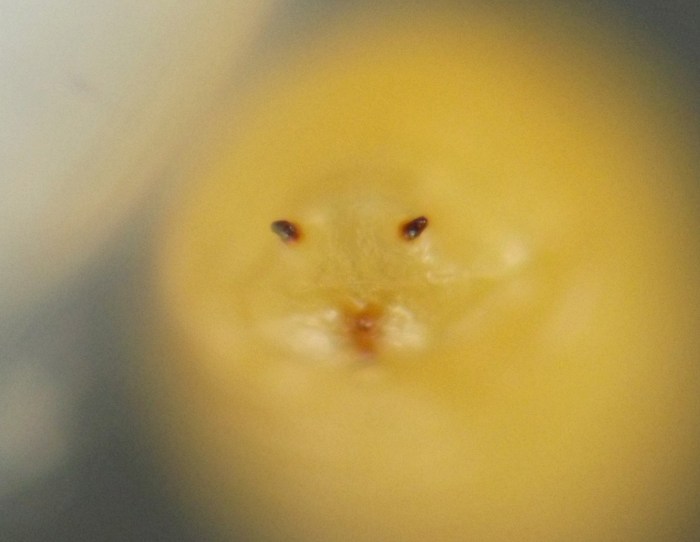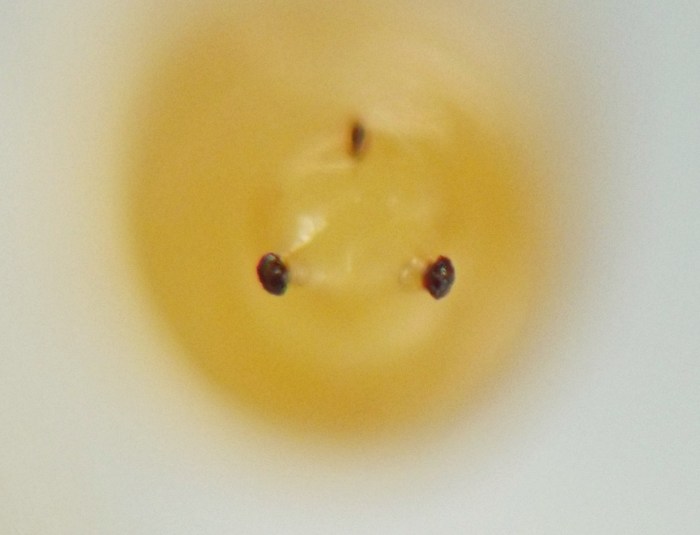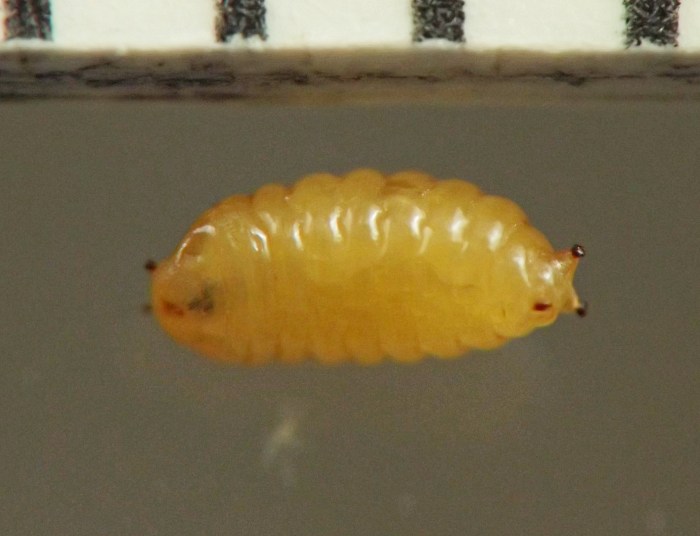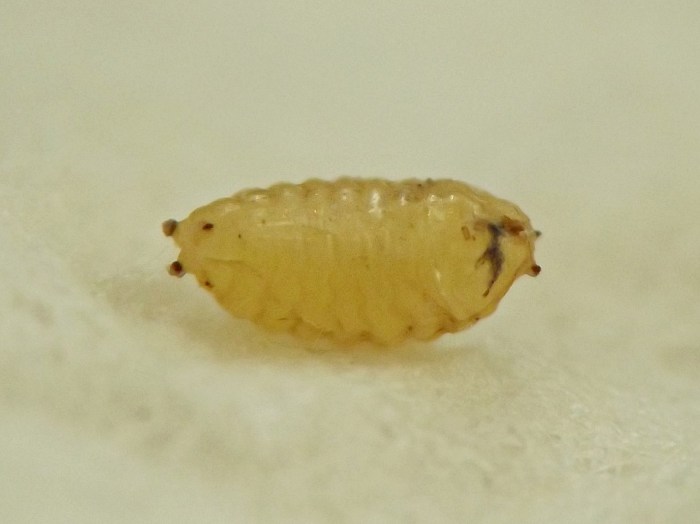Stem borer (Diptera: Agromyzidae) in Phlox (#0376) [0376]
| Order | Diptera |
|---|---|
| Family | Agromyzidae[T,L,P] |
| Lower taxon | Phytomyzinae |
| No. spp. involved | One confirmed |
| Feeding mode | Stem borer |
| Host plant | Wild blue phlox, Phlox divaricata (Polemoniaceae) |
Tunnels in stems of the host. Tunnel walls are distinctly ragged as with other dipteran borers. Pupation is external, off the plant, with the puparium very small (~2mm in length) and yellow. The population of this borer observed by the author in 2023 suffered very high larval mortality, with roughly 66-75% of examined larvae having been killed by a parasitoid wasp or otherwise dying of natural causes before reaching the puparium stage. Some of the parasitoid wasp larvae spun cocoons in the tunnels not far from their hosts' remains, as shown in the images below.
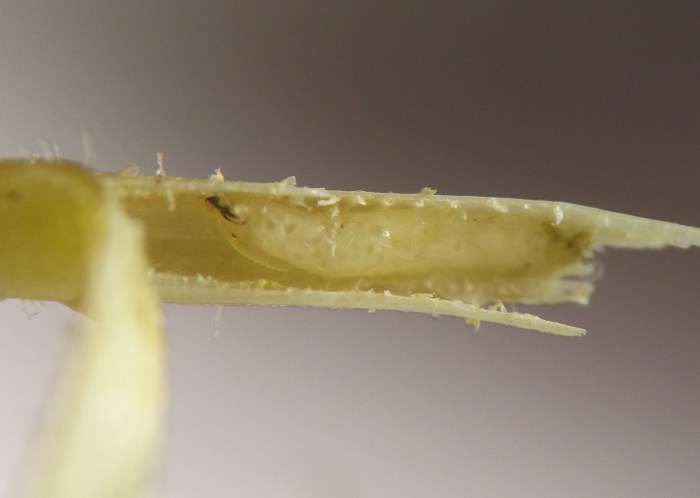
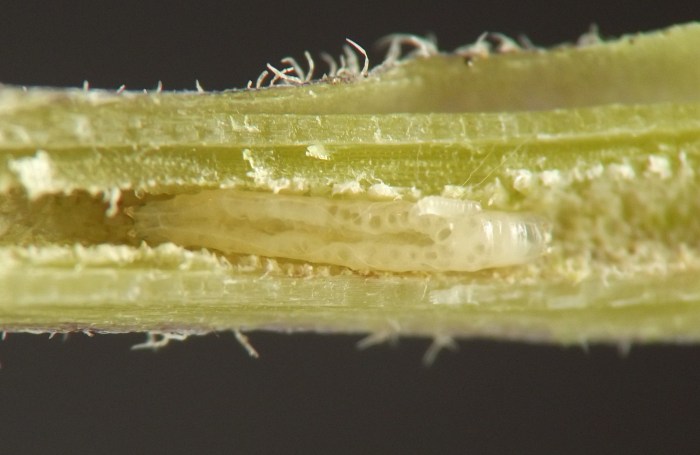
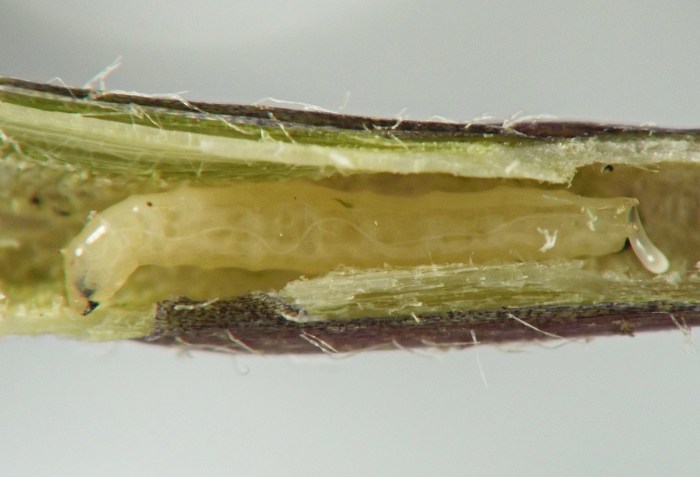
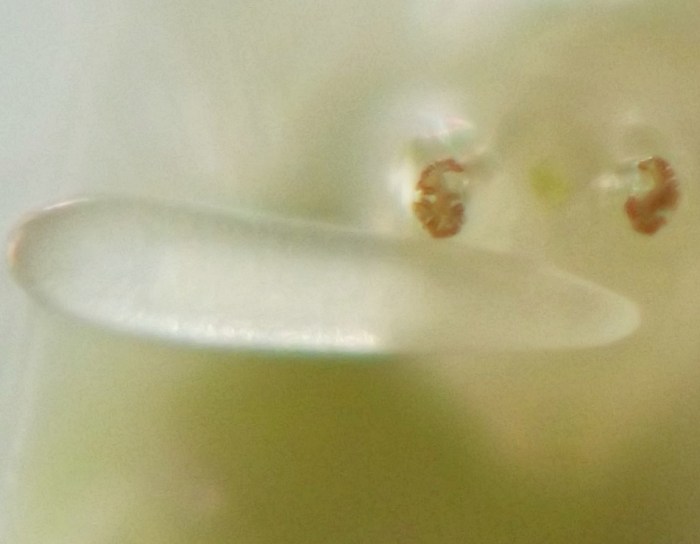
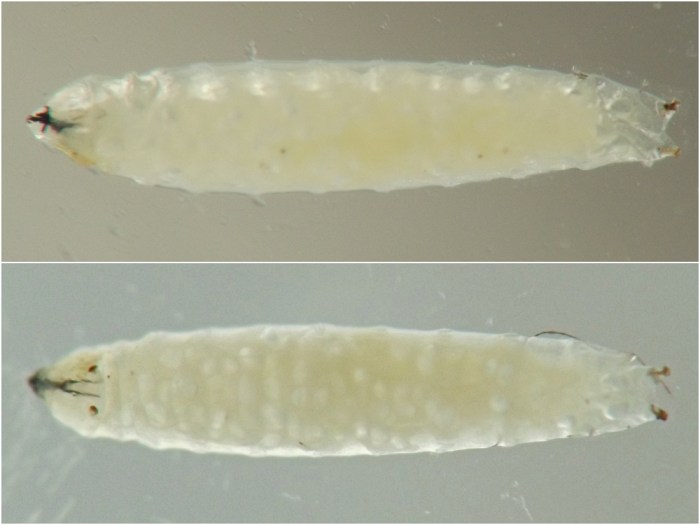
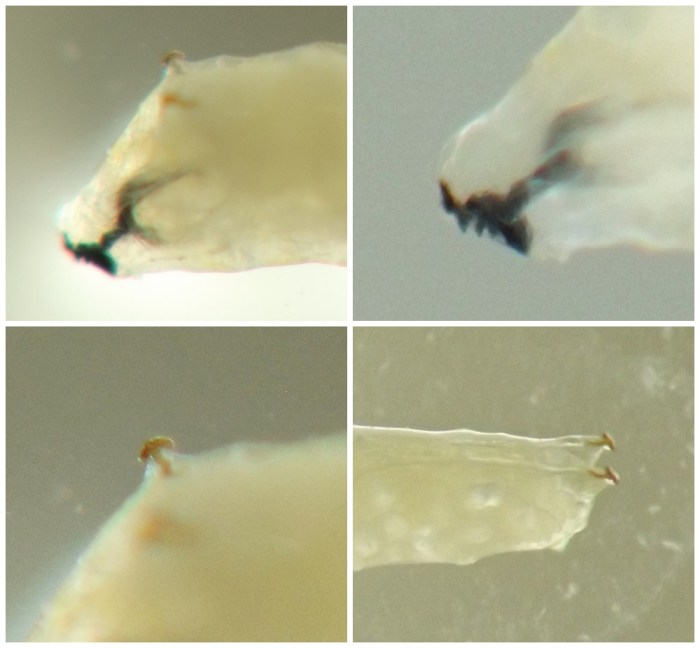
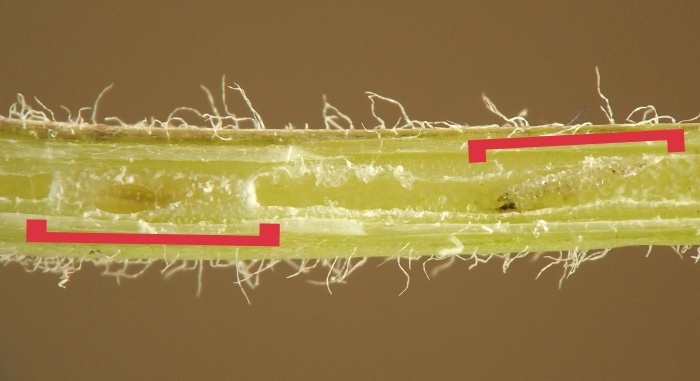
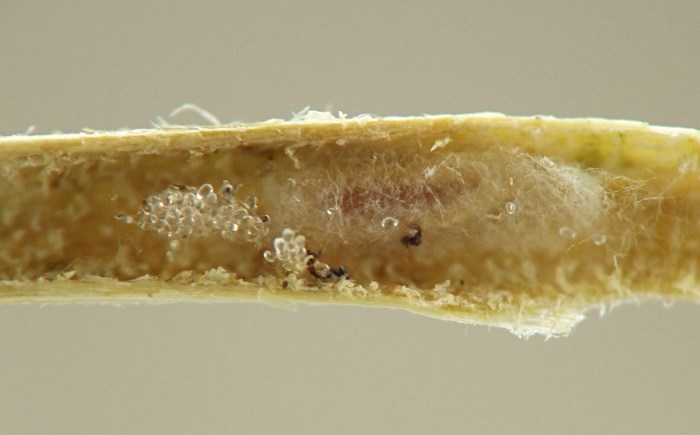
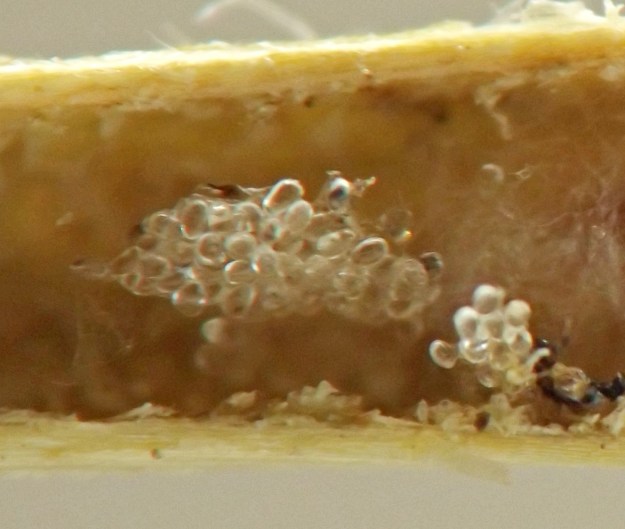
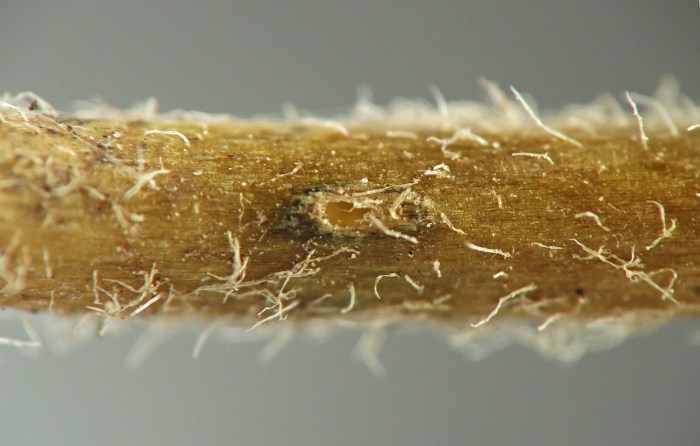
Specimen data for images
Coll. 06/29/23, photos taken 06/29/23-06/30/23 (01, 03, 12-17, 19); coll. 06/21/23, photos taken 06/21/23-06/22/23 (02, 04-11, 18); coll. 06/29/23, puparium found outside of stem in rearing container on 07/01/23, photos on 07/02/23 (20-24); coll. 06/29/23, puparium by 07/xx/23, puparium photographed after overwintering on 03/17/24 (25-26).
References
Ellis, W.N. 2023. Agromyzidae. In Plant Parasites of Europe [website]. Retrieved October 26, 2023 from here.
Page created 10/26/23. Last update: 11/19/24
